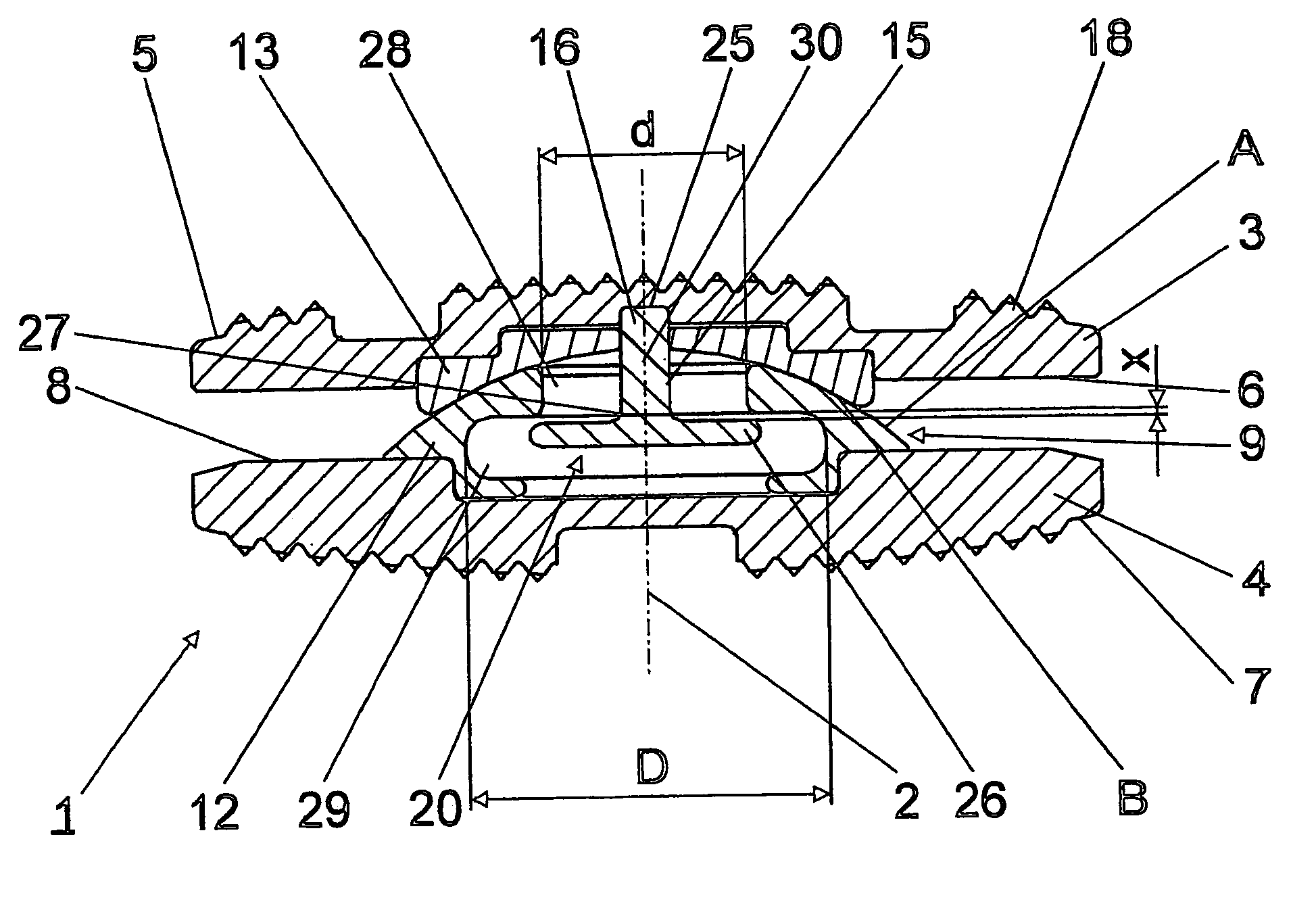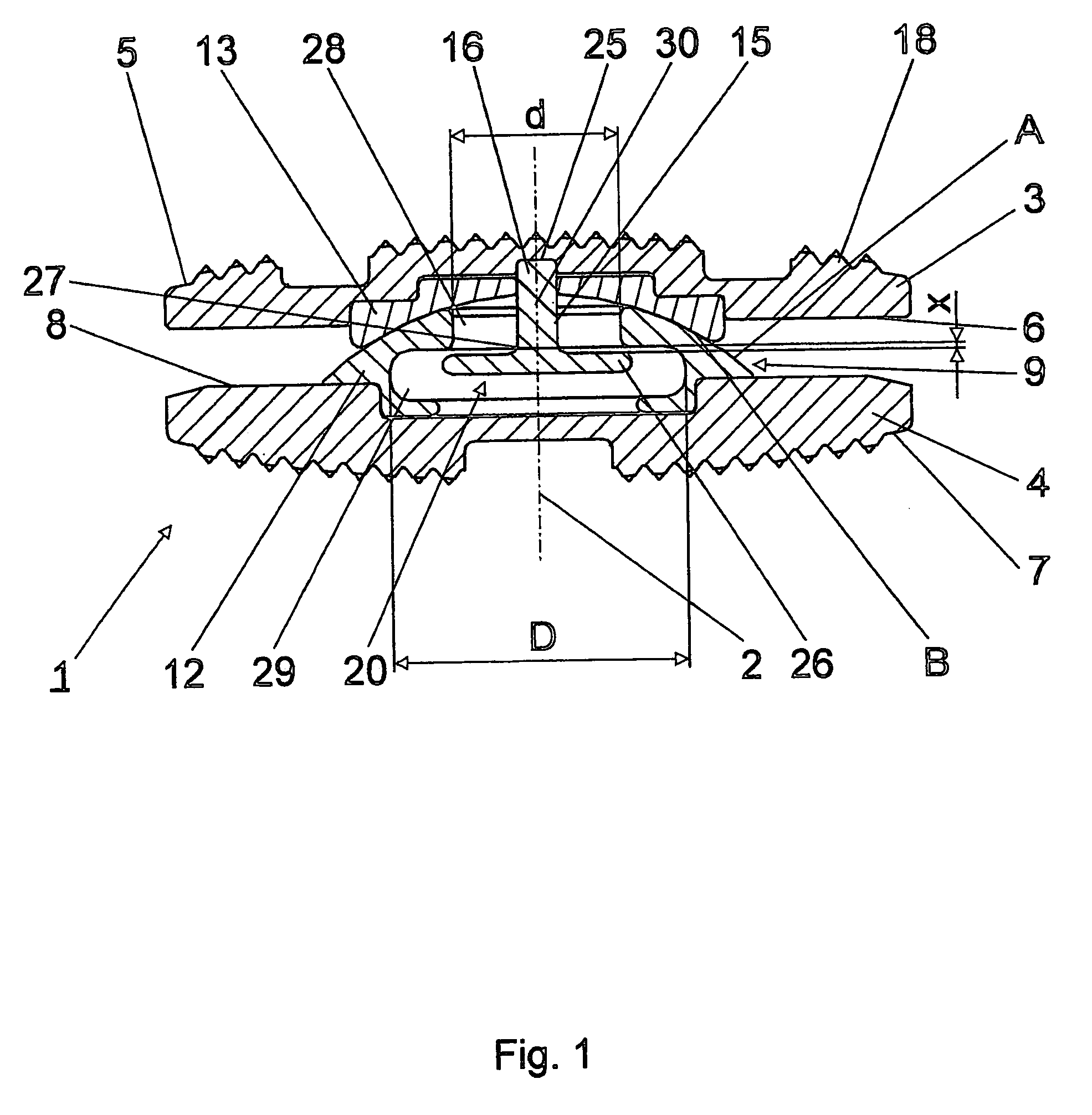Intervertebral implant comprising dome-shaped joint surfaces
a technology of intervertebral implants and joint surfaces, which is applied in the field of artificial intervertebral implants, can solve the problems of limiting the natural function of the spine, intervertebral disks, and discomfort for patients, and achieves the effect of no
- Summary
- Abstract
- Description
- Claims
- Application Information
AI Technical Summary
Benefits of technology
Problems solved by technology
Method used
Image
Examples
Embodiment Construction
[0024] The embodiment of the intervertebral implant 1 illustrated in FIGS. 1-4 comprises a central axis, a top part 3, a bottom part 4, a joint 9 and an anchoring element 15. The top part 3 comprises a top apposed surface 5 that intersects a central axis 2 wherein the top apposed surface 5 is adapted to be placed adjacent and preferably in contact with a vertebra located above the site of a removed intervertebral disk. The bottom part 4 comprises a bottom apposed surface 7 that intersects a central axis 2 wherein the bottom apposed surface 7 is adapted to be placed adjacent and preferably in contact with a vertebra located above the site of a removed intervertebral disk. The joint 9 intersects the central axis and is provided between the top part 3 and bottom part 4, for the articulated joining of the top part 3 and bottom part 4. The joint 9 has a two-part construction comprising a convex joint part 12 and a joint shell 13. The convex joint part 12 is shaped as a partial spherical ...
PUM
| Property | Measurement | Unit |
|---|---|---|
| Fraction | aaaaa | aaaaa |
| Fraction | aaaaa | aaaaa |
| Fraction | aaaaa | aaaaa |
Abstract
Description
Claims
Application Information
 Login to View More
Login to View More - R&D
- Intellectual Property
- Life Sciences
- Materials
- Tech Scout
- Unparalleled Data Quality
- Higher Quality Content
- 60% Fewer Hallucinations
Browse by: Latest US Patents, China's latest patents, Technical Efficacy Thesaurus, Application Domain, Technology Topic, Popular Technical Reports.
© 2025 PatSnap. All rights reserved.Legal|Privacy policy|Modern Slavery Act Transparency Statement|Sitemap|About US| Contact US: help@patsnap.com



